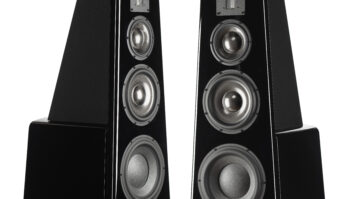Command Audio launched its wireless audio-on-demand service at retail in January in the Denver and Phoenix markets, where the company supported the rollout with radio and newspaper ads that will continue throughout the year.
The four-year-old Redmond City, Calif., company plans to expand its subscription service to eight more markets by the end of the year, with a goal of 50 markets by the end of 2001.
In each market, five to six FM stations continuously transmit updated audio programming via subcarrier frequencies to a $199 Thomson-made handheld receiver, which stores up to eight hours of content in 8MB of embedded solid-state memory. Subscribers play back the content at their convenience.
Command’s content consists of 205 programs that include time-shifted TV and radio programs, audio versions of content from national publications and local newspapers, original programming such as gardening and parenting programs, and real-time traffic alerts.
Thomson’s RCA-brand receiver captures only the audio programs that a subscriber selects through an onscreen menu. The selections are programmed into one or two playlists. Because the content is compressed before it’s transmitted, it takes only a few minutes to deliver an updated hour-long program, a spokesman said.
The service is targeted to people, particularly commuters, who would otherwise miss favorite radio and TV programs or don’t have the time to read multiple magazines and newspapers. Subscribers can pause programs, skip from program to program, and skip from segment to segment within a program. The latter feature lets subscribers skip past news stories in a news program or skip past traffic information that’s not relevant to their travel route, the spokesman said.
A subscription costs $11.95/ month if a year’s subscription is paid in advance. The price rises to $14.95/month for quarterly billing and $19.95/month for monthly billing.
The battery-operated device features a built-in speaker and headphone jack for portable use, but the product also plays back programming through a car audio system via a cassette adapter. Power is supplied through a cigarette-lighter adapter. The device itself would be placed in a dash-mount cradle.
The receiver became available in January in nine Circuit City and two Fry’s stores in Phoenix and in six Circuit City stores in Denver. The service was soft-launched in late December, but the receiver at that time was available only through a toll-free number and Thomson’s e-commerce website.
In Phoenix and Denver, Command plans to supplement radio and newspaper ads with radio-station promotions targeted to commuters, the spokesman said. One could be a commuter-of-the-year promotion, he said.
Four more undisclosed markets are scheduled to go online between May and July, with another four targeted for the early fourth quarter. All markets will use the same subcarrier frequencies, making it possible for subscribers to use their receiver when traveling.
Command’s plans include additional-cost premium services and the delivery of service to a “wide variety of handheld devices” such as pagers, wireless phones, and PDAs, possibly via paging and wireless phone networks, the spokesman said.
He also sees a potential to include the technology in car radios.
The first of the planned new premium services will probably be launched in July. Called Business Plus, the service will cost $9.95/month and include content from CNBC, Fortune magazine, and frequently updated financial reports including stocks and commodities.
Although two satellite-radio providers will soon be delivering 100 channels each of content to motorists, Command said its service will not compete with the satellite providers, in part because Command doesn’t offer music channels. More important, satellite radio will not provide local content such as news, weather, sports and entertainment listings, Command’s spokesman said, nor does satellite radio give users control over what they want to hear and when.
Since the product was announced in January 1999, Command eliminated a built-in FM transmitter that would have sent the content to a car stereo system via an unused FM-radio frequency. Command said it was unable to obtain FCC approval for the FM transmitter in time for the launch.
For several reasons, the rollout is proceeding later than Command originally announced. The company initially intended to launch Denver and Phoenix in the late second quarter of 1999, with eight more markets targeted for the first quarter of 2000 and a total of 40 markets by the end of 2000. The timetable was revised to give Thomson time to enhance the receiver’s sensitivity and to line up enough radio stations in the markets to provide ample coverage.













